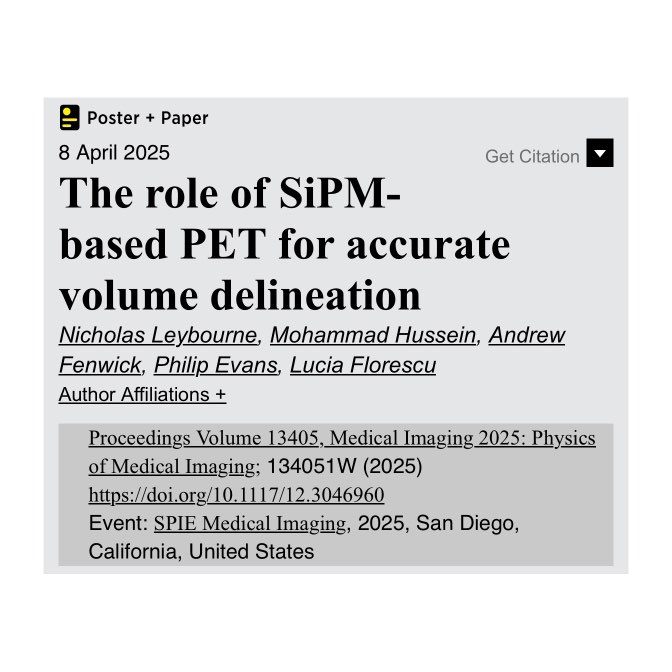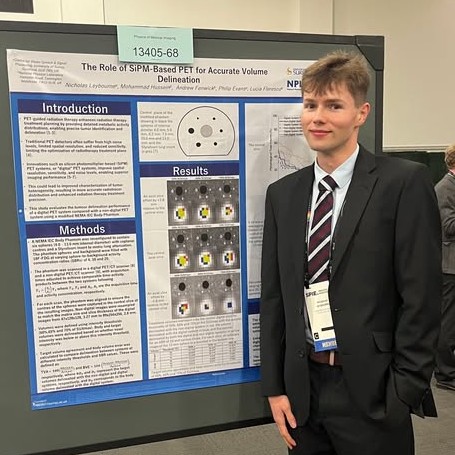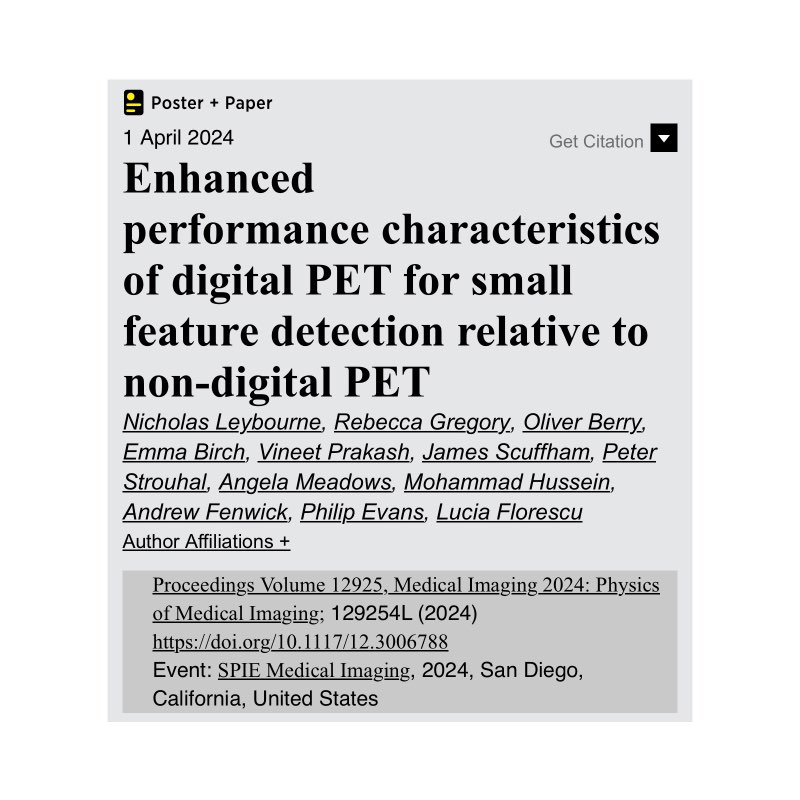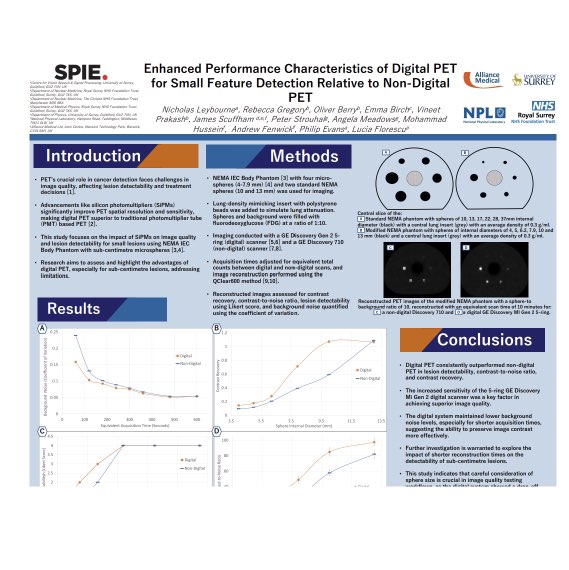Publications & Press

The role of SiPM-based PET for accurate volume delineation
Leybourne N, Hussein M, Fenwick A, Evans P, Florescu L
10.1117/12.3046960
This study investigated the efficacy of silicon photomultiplier (SiPM) PET systems in improving volume delineation for radiotherapy treatment planning. Using a modified NEMA IEC Body Phantom filled with fluorodeoxyglucose (18F-FDG), both digital SiPM-based and non-digital photomultiplier tube PET scanners were evaluated. Results showed that the digital SiPM system consistently delineated target volumes 1.91 to 3.56 times larger than the non-digital system. The digital system's target volumes (440mm³ to 984mm³) were closer to the true geometric volume of the spheres (2156mm³), compared to the non-digital system (209mm³ to 419mm³). These differences were most pronounced for higher sphere-to-background activity ratios and smaller structures. The study suggests that digital PET can improve cancer treatment planning, offering advantages for targeted radiation therapy.
April 2025
SPIE Medical Imaging Conference 2025, San Diego, USA
Attending the SPIE Medical Imaging Conference 2025 was a valuable experience for my career development. Presenting my work allowed me to showcase my research and receive constructive feedback, which helped me make significant progress. It also provided a unique opportunity to engage with other professionals in the field, learn about their work, and gain insights that expanded my knowledge and perspective.
Febuary 2025
Enhanced performance characteristics of digital PET for small feature detection relative to non-digital PET
Leybourne N, Gregory R, Berry O, Scuffham J, Evans P, Florescu L, et al.
10.1117/12.3006788
This study investigated the performance of digital PET/CT systems in detecting smaller lesions using subcentimeter microsphere inserts in a NEMA IEC Body Phantom. The digital system was compared to a non-digital PET scanner with the same image reconstruction method. Results showed that the digital system had higher detectability for lesions under 7.9mm, with an average 1-point higher Likert score. Additionally, contrast recovery drop-off occurred at smaller microspheres in the digital system, suggesting that digital PET requires smaller spheres in image quality testing for accurate performance comparison. These findings highlight the superior imaging capabilities of digital PET, improving lesion visibility and detection.
April 2024
SPIE Medical Imaging Conference 2024, San Diego, USA
Presenting my poster at SPIE Medical Imaging 2024 provided a valuable platform to engage with experts in the field, whose constructive feedback contributed to the refinement of my methodology and interpretation of results. The experience facilitated critical reflection on my current work, highlighting areas for further exploration and improvement. Additionally, attending the conference allowed me to stay up to date of the latest developments, methodologies, and innovations in the discipline, and to engage in meaningful discussions with fellow researchers.
Febuary 2024
Research Seminar Speaker, CVSSP
Image Quality and Clinical Potential of Novel Silicon-Based PET
This presentation examined the advantages of silicon-based PET compared to conventional systems. It outlined the principles of PET imaging using FDG as a positron-emitting tracer and described digital photon counter technology, which enables detection of individual photon events. Preliminary research was presented using modified NEMA phantoms with small spheres to investigate the feasibility of reduced scan times, lower radiation doses, improved diagnostic accuracy, and enhanced treatment planning. Potential applications in radiotherapy, including dose painting techniques, were also explored.
November 2023